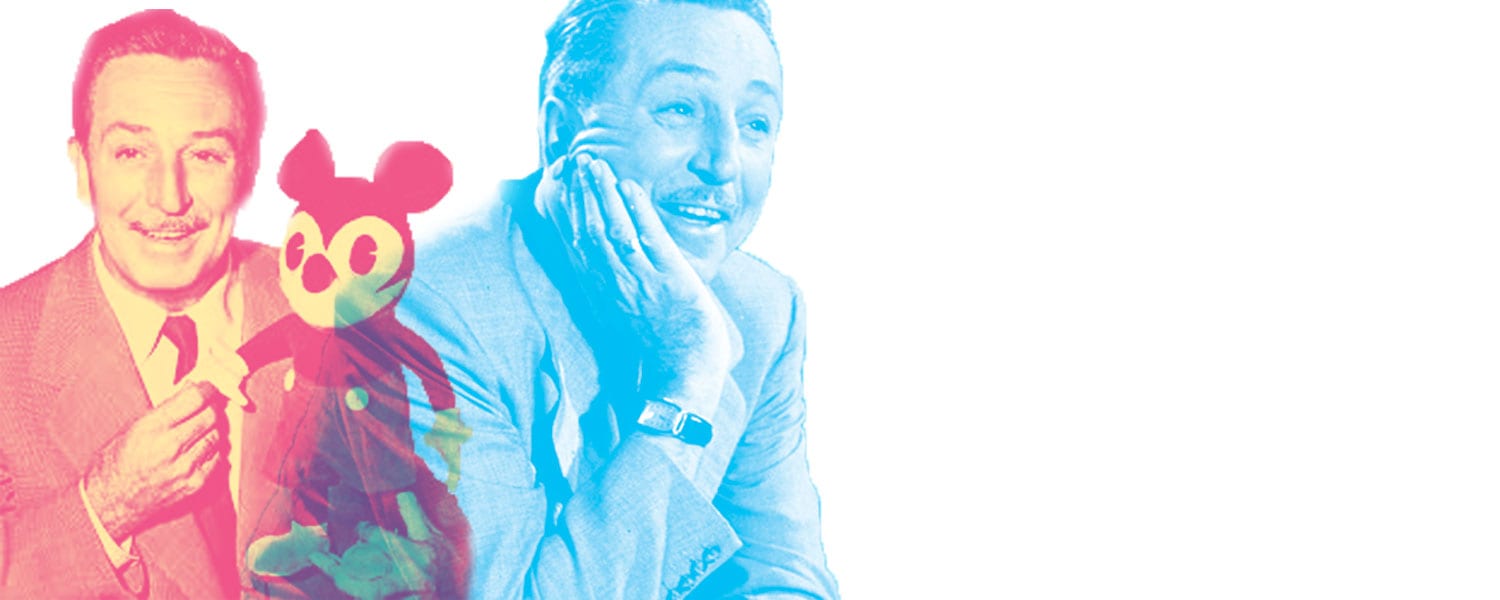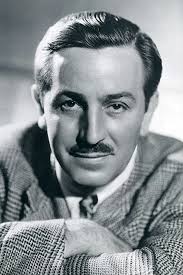

The name Walt Disney is synonymous with innovation, creativity, and nostalgia. Disney’s legacy is multifaceted, from theme parks and products to films and Broadway shows. But all that magic and wonder started with a man who had a knack for animation and a steadfast dedication to his dream.
Disney began drawing and painting as a child. In high school, he worked for the school newspaper as a cartoonist, and after school, he enrolled in drawing and photography classes at the Chicago Art Institute. He dropped out of college at the age of sixteen in hopes of enlisting in the Army. Instead, he joined the Red Cross and spent a year in France as an ambulance driver.
When he returned in 1919, he got a job at an ad agency making commercials using cutout animation. Disney found inspiration here and began exploring camera work and hand-drawn cell animation in his spare time. Soon after, he left his job and decided to open his own animation business.


After a few years marked by critical success and financial difficulty, Disney decided to make a fresh start in Hollywood. There, he established Disney Brothers’ Studio with his brother and another cartoonist from his previous studio.
By 1928, he’d produced three cartoons featuring a new character he’d been developing—Mickey Mouse. At first, he struggled to find distribution for the animated shorts. But once sound made its way into film, he created another cartoon with music and his own voice for Mickey—it was an instant hit.
Disney won his first Oscar in 1932 for a cartoon produced in color featuring Mickey and his new friends, Minnie Mouse, Donald Duck, Goofy, and Pluto. Five years later, he produced his first full-length film, Snow White and the Seven Dwarfs. Despite its debut in the midst of the Great Depression, the film brought in an astounding $1.5 million and won eight Academy Awards.
Walt Disney Studios opened in Burbank, California in 1939. For the next few decades, Disney produced some of his most beloved animated films of all time, from Pinocchio to 101 Dalmatians. In addition to film, the studio was also one of the first to use television as a form of entertainment. Disney also used television to promote his theme parks.
Walt Disney is arguably one of the most significant figures in American pop culture. It’s only fitting that such an influential man would need a powerful watch on his wrist. Disney’s watch of choice? A yellow gold Rolex Datejust.
It’s no surprise he was attracted to a brand like Rolex. Disney’s innovation in the entertainment industry is certainly comparable to Rolex’s impact on the watch industry. The brand’s slogan— “when a man has a world in his hands, you expect to find a Rolex on his wrist”—is appropriate for the man who literally created the wonderful world of Disney with his own two hands.
Protect What You Love With Hodinkee Insurance We're here to help avoid a potential heartache.…
Watching Movies: Adam Driver Takes Over The Gucci Family Empire Wearing A JLC Reverso in…
Second Opinions: The Tudor Black Bay Fifty-Eight Is Not A Submariner Alternative It's its own…
Your Watch Just Tripled In Value – Now What? Auction season is around the corner.…
A Week On The Wrist: The 40mm TAG Heuer Aquaracer Could Be Your Only Watch…
Five Critical Things To Do Before Buying A Watch Online Originally published by Hodinkee, March…